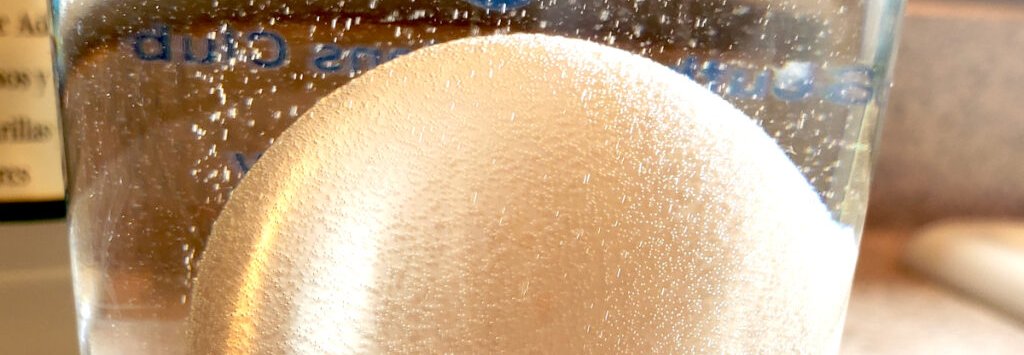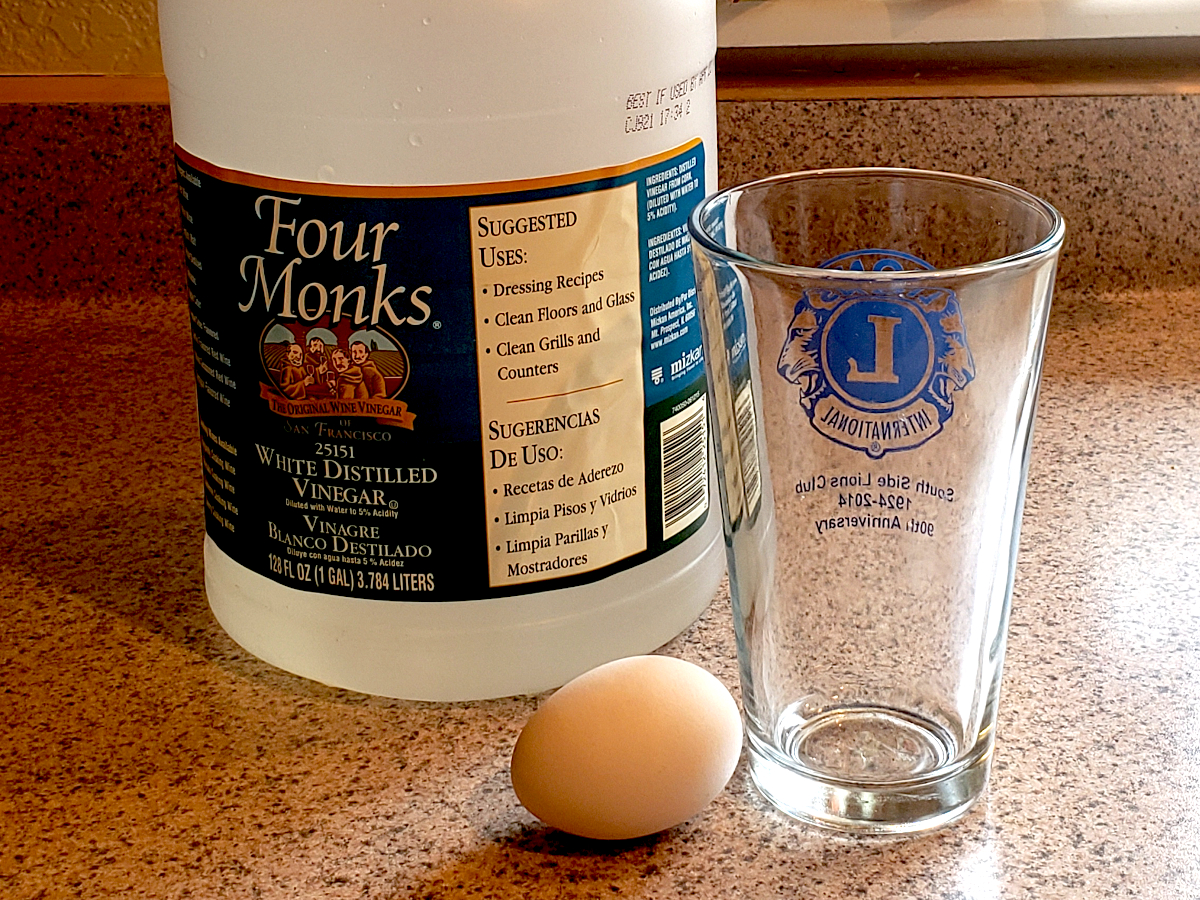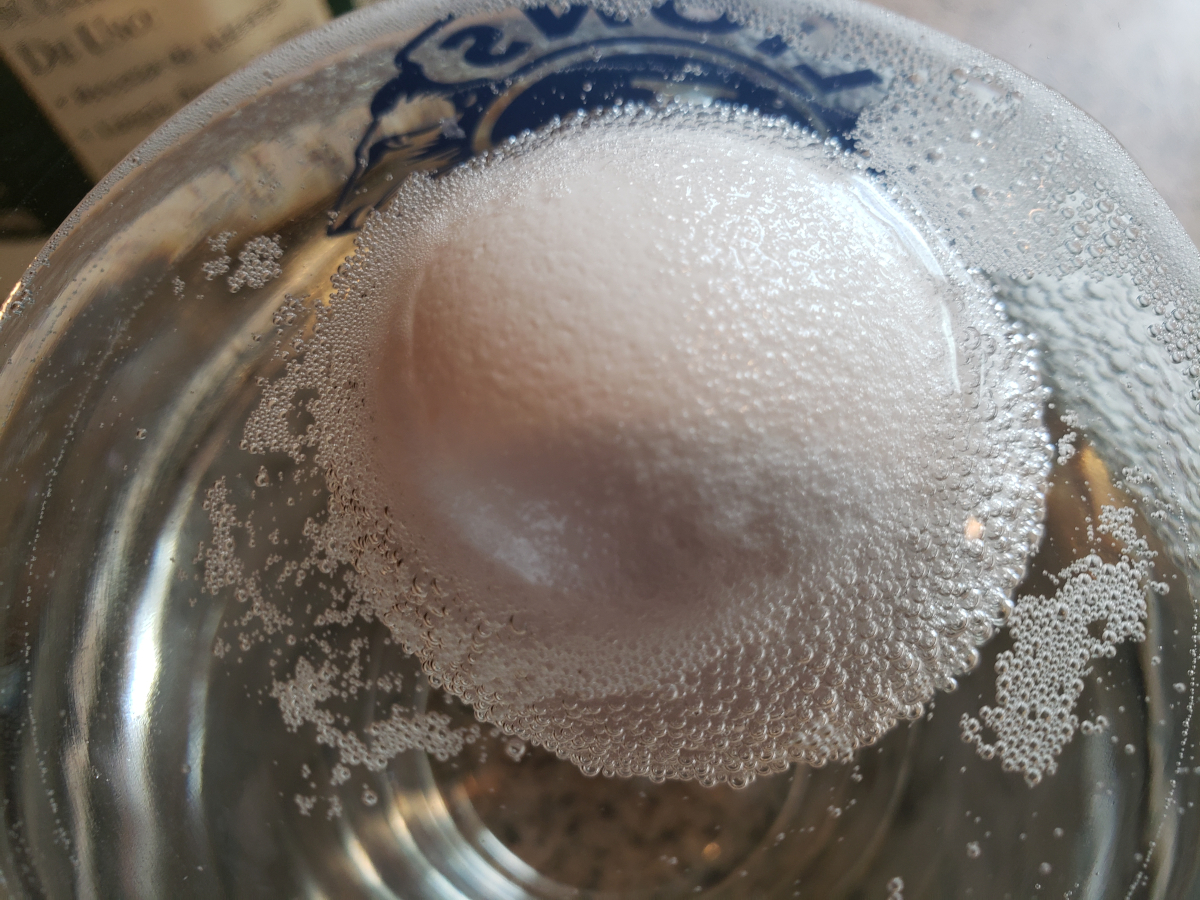
Eggshells are quite strong, even though they are considered fragile. Birds have evolved to make eggs that are hard to break. Of course, that doesn’t mean they can survive being dropped from a height, or being smashed with a hammer. But, the calcium carbonate that makes up an eggshell is very tough.
A healthy bird’s body produces calcium carbonate that coats the soft membrane and yolk just before the egg is ready to be laid. But what happens if the chemical prevents the thick coating of calcium carbonate around the egg from forming?
We can do an experiment, using ordinary kitchen vinegar (dilute acetic acid), and see what happens to the calcium in an eggshell when it is exposed to an acid.
Materials
A clear glass
A raw egg
A bottle of kitchen vinegar
A spoon
Procedure
- Fill the glass with vinegar. Leave enough empty space that you can put the egg in without displacing any vinegar.
- Observe the outside of the egg. Carefully feel it– what does the shell feel like? Can you gently scratch it with your fingernail? Does anything happen?
- Write a prediction in your science journal. What do you think will happen to the egg in the vinegar? Will it change or not? How might it change? How long do you think it will take before you notice a change?
- Carefully put the egg into the glass of vinegar. You may need to use a spoon to help. The egg may float in the liquid for a minute or two, but it will eventually sink. Record the time you put the egg in the vinegar, then observe the egg for a few minutes. Do you notice anything different yet?
- Watch for bubbles on the surface of the eggshell. What do you think might be causing the bubbles? Write down your prediction in your science journal.
- Let your egg stay in the vinegar for at least an hour, before checking again. Record the time and any new changes to the egg. Are there more bubbles? Are there any other changes?
- Every few hours, you can check the egg. Be sure to record the time and any new changes in your science journal, along with any new predictions or questions you have.
- Eventually, you will see a frothy layer of white foam collecting on top of the vinegar. This is made from layers of the calcium carbonate from the eggshell. In about 24 hours, draw a picture of what the egg looks like now. How has it changed? What do you think will happen if you leave it in the vinegar?
- You can carefully remove the egg and rinse it, and gently scrape the eggshell with your fingernail again. What happens? Be careful, the eggshell will be a lot weaker!
- If you leave the egg in the vinegar for about 36 hours, eventually all the calcium carbonate will be dissolved by the acetic acid, leaving just the soft membrane and yolk behind. Do you think an egg would be able to hatch if its eggshell was a lot weaker and softer? Why not?
Think Like A Scientist: Explore More
You can expand on this investigation by taking your decalcified egg and seeing what happens when you put it into another liquid.
Carefully remove the decalcified egg from the vinegar, and very gently rinse it off with plain water. Be careful– it will be fragile, and might break!
Fill a glass with a different liquid. You could try corn syrup, salt water, soda, or plain water, or something else. Make sure that an adult says it’s all right to experiment with chemicals and kitchen items.
Place the decalcified egg in the new liquid, and record the time you put it in. Now, predict what will happen to the egg in the new liquid, and write it in your science journal. Leave the egg in the new liquid for at least 1 hour before you check on it. Has anything changed? Record the changes and the time in your science notebook.
Check on the egg again in 12 hours. Record the time, any changes, and any new questions you have in your science notebook.
Do you think that there is any substance that can regrow the calcium eggshell once it’s been weakened? Why or why not?
Some pesticides, like DDT, build up in birds’ bodies when they eat other animals that have eaten it. The chemical doesn’t pass through the bird’s body, but stays, and changes how the bird’s body functions– one change makes it harder for them to produce as much calcium. How do you think this might affect birds and their babies?

